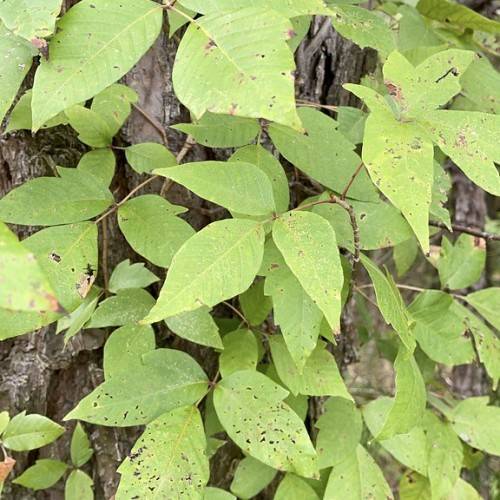
poison ivy
Toxicodendron radicans
Cycle:
Perennial
Watering:
Average
Hardiness Zone:
4 - 10
Flowers:
Flowers
Sun:
Full sun,part shade
Leaf:
Yes
Growth Rate:
High
Maintenance:
High
Poisonous To Humans:
Yes
Poisonous To Pets:
Yes
Drought Tolerant:
Yes
Invasive:
Yes
Care Level:
Medium
watering
Water Poison Ivy (Toxicodendron radicans) to keep the soil evenly moist but not soggy at all times. Water when the surface of the soil appears dry, providing a good soaking about once a week during warm to hot weather. Overall, the amount to water will vary, but you should never let the root zone dry out completely, as this will cause the plant to wilt and yellow leaves. On the other hand, overwatering can create other issues such as root rot.
sunlight
Poison ivy (Toxicodendron radicans) does best in full sunlight, though it can adapt to various light levels. Too much direct sunlight, however, could cause the leaves to scald and dry out. The ideal amount of sunlight for a poison ivy plant is 6 to 8 hours a day. These hours are typically best during the morning, with some shade in the afternoon. Doing so ensures that the plant gets the direct sunlight necessary for photosynthesis and general healthy growth, while avoiding the intense midday heat.
pruning
Poison ivy (Toxicodendron radicans) should be pruned in early spring, before the plants start to grow and flower buds begin to form. Pruning should involve removing dead, diseased, or damaged stems, and removing any stems that are crossing or rubbing against each other. Pruning should be done conservatively so that the natural shape of the plant is maintained. It is not necessary to completely remove all stems in order to reduce the spread of this plant species.
